Interview – “Zootopia” (2016) producer Clark Spencer
“Zootopia” is a magical place in which 64 different species of animals live in a thriving, modern-day metropolis. Judy Hopps (Ginnifer Goodwin) is an inspiring young bunny who becomes a police officer and befriends Nick Wilde (Jason Bateman), a street-wise fox, and together, they attempt to solve a mystery. This is the premise of Disney’s new animated feature, and producer Clark Spencer kindly stopped by Phoenix to chat with the Phoenix Film Festival and three other critics/journalists (Brent Hankins, Nick Spake and Morgan Stradling) for a group interview. Clark shared the studio’s huge efforts to make “Zootopia” a most unique place, the daunting technical challenges to include 9.2 million strands of fur on an animated giraffe and how the film contains shades of “Chinatown” (1974) and “The Maltese Falcon” (1941). “Zootopia” opens on Friday, March 4.
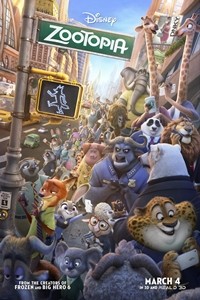 PFF: During the initial tour of “Zootopia”, the audience sees a forest, snow-covered mountains and a body of water, so the animated locale is geographically unique. It is also a melting pot of animals as well. What city or place does “Zootopia” best resemble?
PFF: During the initial tour of “Zootopia”, the audience sees a forest, snow-covered mountains and a body of water, so the animated locale is geographically unique. It is also a melting pot of animals as well. What city or place does “Zootopia” best resemble?
CS: It is interesting, because we studied a lot of cities. We actually went to New York City and (worked) with a historian. (We wondered when immigrants) started to land on the island of Manhattan, and different ethnicities – Irish, Chinese, Italian, (etc.) – all came in, how did (their communities begin) to grow? How do Chinatown and Little Italy sit next to each other? How do the (communities) coexist?
We looked at Paris. Paris is a city where everything spirals out, (and in Zootopia,) we have a downtown area, and everything is going to come out from that. We even looked at Disneyland and the Magic Kingdom down in Orlando, and there is a castle (with different) lands that go around it.
We really started to think about that aspect, but the most important thing that we learned was: it all needs to start from a watering hole. Even though we do not say it in the film, in the central part of town, there is a watering hole where the fountains are. That is where all of the animals gather. To us, that was the origin of Zootopia, and everything is built from there, which is how all cities start. They usually start with a body of water. That was our way of thinking about how the city (should be) built.
Also, how could these different (physical) environments exist? We met with a really important expert who talked about air-conditioning units, and there is a huge wall that divides Tundra Town, the cold area from Sahara Square. You see the wall in the film, and the train goes through it. It is an air-conditioning unit. The expert said that if you have enough money and could build a big air-conditioning unit, that all units do the same thing: blow out hot air on the outside and blow out cold air on the inside. Cold air creates Tundra Town. Hot air creates Sahara Square, and then the melt off from Tundra Town creates the Rain Forest District. There is true logic to how these environments sit next to (one) other in a way that could “technically” – as the expert said, if there was enough money and wherewithal – create that kind of world.
PFF: The best Disney films have managed to be perennial while also keeping up with modern times, and “Zootopia” is no exception. How do you think that Disney manages to stay consistently timeless and timely?
CS: It’s hard. It’s really, really hard, and I have to be honest, I feel very lucky. Many of the films that I have worked on have taken place in the modern world. I produced “Lilo & Stich” (2002), “Bolt” (2008), “Wreck-It Ralph” (2012), and now “Zootopia”, and they all take place in the (modern) world. Even if it is an all-animal world, it still is a modern, evolved world. I have not done a fairy tale. As a result, I get the great luxury of having artists that think about how to create that world and have fun in it, where it is very timely, but also hopefully timeless. The story, characters and theme have to be timeless in some ways.
Some of the ideas can be timely. We have ads in the film and have a carrot on the back of a phone instead of an apple. I feel very fortunate, (because) I get to work with teams that are just having fun thinking about: what else can we do? How do we put the animal-spin on something that allows it to be relevant and relatable for us? Ultimately, it allows the audience also to have fun, especially for the adults. We are trying to create movies for everyone. We do not want it to be (only) for parents who have kids. We really want it to be for teenagers, for the date crowd and for the people who do not have children to come and (experience) these kinds of entertaining stories. This allows us to do that and have it play at two different levels for kids and adults.
PFF: This movie is for all ages, and I saw a lot of happy faces – young and old – leaving the theatre. How do you balance the whimsy of an animated tale with a detective story which is more targeted to adults?
CS: It’s not easy, and I’ll talk about two things. One, we are always trying to figure out how (to make a movie) for people of all ages.
Ultimately, it is not science, meaning that you cannot sit there and say, “Well, we must have 50 percent of the jokes for parents and 50 percent for kids, and we know that this will play for a 14 year-old, and we know that will play for a 3 year-old.”
You cannot do it. There is no science for it, but at the end of the day, we have to look and say, “What makes us laugh?”
(We also) hope that it makes the kids laugh, because it cannot be too esoteric. It cannot be too deep. So, when we look at a (moment) like the DMV scene (in which a naturally slow sloth works there), we know that it will play great for adults, because they probably had that experience. Now, the kids haven’t yet, but they are going to think that the sloth looks and sounds funny, and because he talks slowly. We hope that they can both enjoy that scene together.
When it came to the police procedural and having a mystery, a really interesting thing came up early on in terms of the pitch. The writer and directors (suggested to) put a mystery into this film. We have not done a mystery in a long time. “The Great Mouse Detective” (1986) was really the last one, but (the mystery in “Zootopia”) was really complex.
I will tell you that there were times when we said, “Should we lose the mystery?”
The mystery would get so complex that you would get lost in trying to figure it out and forget about the themes, stories or characters, because we really have many different themes weaved into this film. I am so thankful that the directors never let that idea go.
They really fought hard and said, “Well no, our job is to figure out how do we get the mystery to be interesting enough that we are caught up in it and simple enough where we can understand it.”
We had to test the film many times. Ultimately, we wanted to see – with an audience – are they tracking the mystery? So, it was one of those things where we had deep conversations about it, but now, I am so proud (that) the mystery is in there, because I think it is one of the layers that is unexpected. I think that people will come in and (expect to) see an all-talking animal film, and they have one expectation. They think that they are going to laugh, and hopefully, they will have emotion, but they are not expecting a mystery to (be) layered in there. They are not expecting a buddy-cop comedy.
PFF: You refer to the movie as a police procedural, and it certainly falls into that category. “Zootopia” has a film noir-feel too. It has shades of “Chinatown” (1974) and “The Maltese Falcon” (1941) as well, and it adds an additional layer for adults. Were there specific movie influences that you drew from for this film?
CS: Absolutely. We looked at those two (movies) in particular, and we looked at Frank Capraesque films for Judy’s character. We looked at great films to give us inspiration. When we talk about the police procedural, the artists said that they would love to have a film noir-feel to it. It is a very interesting genre, and to your point, it gives another layer into the film. It allows you to see those elements from (other) amazing movies.
PFF: So, for each animated film, there is one big technical hurdle that you have to overcome. For “Tangled” (2010), it was hair. For “Frozen” (2013), it was snow. What was the technical hurdle in this film?
CS: The big one for us – and it has multiple levels – was fur. Fur was a huge one for us, because when we do characters with hair, everyone has the same hair. In other words, once we create one strand of hair, you can put it on any character. Give it a curl, give it a different color, make it straight, and you can create variety. Animal fur is different for every different species of animal, and there are 64 different species of animals in this film. So, we studied those 64 species of fur under a microscope to understand what is different about each one.
A polar bear’s fur is actually clear. It is not white, and the light that goes through it creates a reflection that makes the fur appear to be white. A fox’s fur is dark at the root, and it gets light as it goes to the tip. Sheep’s fur is so thick that it gets filled with dirt and twigs, so if you look at any sheep in the movie, they will have dirt and twigs. An artic shrew’s fur is very soft, and an otter has a little bit of oil on its skin, so we had to create technology that would allow us to create each one of those different types of strands of fur.
A giraffe has 9.2 million fur strands on it in our film. Judy has 2.6 million strands on her, and 2 million are on Nick. You start exponentially thinking about how you can go in and do all that, and then we have to create “shader”. We needed to create a new shader technology that will allow the lighting system to understand how it is supposed to react to those different types of fur. It is going to react differently to a sheep’s fur that’s very thick (as opposed) to the softness of a shrew. It just kept layering on top of layering, and then we put clothes on the animals. The clothes have to move in a way that feels realistic.
We (need) an elephant to be as tall as a real elephant, and a mouse to be as small as a real mouse, so (the fur) is going to move differently on something very tiny and something very large. It really is just exponentially built, but it all started with one key thing: we wanted the fur to look realistic. We did not want to use human hair, which is what we have always done. If you watch the movie “Bolt” (2008), that is human hair made to look like – to the best of our abilities – animal fur. In this case, we wanted it to truly be the actual strands of fur for those 64 species.
PFF: About a year ago, you made a shift to assign Judy as the main protagonist instead of Nick. Can you talk about that shift and what the film was like before, with Nick as the protagonist?
CS: Sure, the original version had Nick as the main (protagonist), (but) he is a cynical character. To us, there was something fun about going into the world with a cynical character, especially with Jason Bateman narrating him. We started to realize, (however), that even though Nick is super funny, people were not rooting for him, because he is cynical. It is very hard to get the audience to want to root for a cynical character. We tell the audience – much later in the film – why he is cynical, but it is too late.
It is very late in the film for you to suddenly say, “Now I am rooting for this person”, so we had a big screening where we talked deeply about (switching the lead characters).
Two things came out. One, it was easier to root for Judy. She is a small rabbit wanting this dream, and it would be easier for the audience to want to root for her. (Second), we are going to love the world of Zootopia more. If we learn about Zootopia through the eyes of a cynical character, we start to think the world is already broken from the beginning of the film, from the first few lines.
(The city has) Tundra Town and Sahara Square, and (this) is the most magical place in the world, and yet your main character is telling you, “It’s broken.”
If you start from (Judy’s perspective), and we see what she is seeing, over the course of time, we will realize that the world is actually not that perfect. There are chinks in the armor, and we are going to discover them through her eyes. So we changed the movie in this big way, but we knew that we had to do it, and that was about a year ago.
PFF: This film seems to come out at a very prophetic time because of the subject matter and what we are seeing in our current political climate. It feels like this movie could not be coming out at a better point to really have its message be impactful. Obviously, the development cycle in a movie like this is a bit longer, but at one point did you realize that you have something that could hit harder than you anticipated?
CS: The project started five years ago by director Byron Howard, and at that time, he did not even have the theme. He just said that we’ll have an all-mammal world, where animals have evolved and use technology. In doing the research – when we went out to Africa - we learned this incredible statistic which is 90 percent of the animals in the natural world are prey animals and 10 percent are predators. We never thought about that as an idea or even as a thought, but it makes sense: more prey animals than predators. We thought about a really interesting dynamic where you have one really large group and one really small group, and they have to figure out how to coexist.
Since they have evolved past eating each (one another), now the question is: Do (the prey animals) actually believe that they are completely safe? Will the prey animals worry deep down inside? That is where the themes started to come in, about a year later. To your question, it was not until the last nine months that this incredibly interesting idea – which started five years ago – is starting to feel like it is coming in a (timely) moment in time. Now, we always knew - thematically - that this idea would be universal, because it is just a universal thing, but in terms of where we are at right now, it is incredibly profound. We could have never timed it. It is just a weird confluence of events that all lined up.
 You don’t have to be a crazy cat lady to enjoy Keanu
By Kaely Monahan
You don’t have to be a crazy cat lady to enjoy Keanu
By Kaely Monahan
 Green Room
Green Room
 “Shannon and Spacey deliver a fun history lesson in ‘Elvis & Nixon’”
“Shannon and Spacey deliver a fun history lesson in ‘Elvis & Nixon’”
 Richard Linklater’s newest film Everybody Wants Some!! has been advertised as a “spiritual sequel” to his 1993 film Dazed and Confused. However, it was clear that revisiting the 1970s high school and graduation is not what this film is about.
Richard Linklater’s newest film Everybody Wants Some!! has been advertised as a “spiritual sequel” to his 1993 film Dazed and Confused. However, it was clear that revisiting the 1970s high school and graduation is not what this film is about.
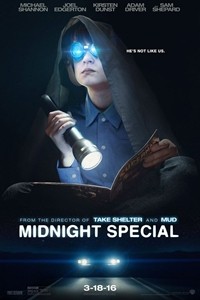 Midnight Special
Midnight Special
 ‘Krisha’ is a memorable Thanksgiving movie for nontraditional reasons
‘Krisha’ is a memorable Thanksgiving movie for nontraditional reasons
 Batman v. Superman: Dawn of Justice
Batman v. Superman: Dawn of Justice
 Plummer’s performance makes ‘Remember’ a thriller that you won’t forget
Plummer’s performance makes ‘Remember’ a thriller that you won’t forget
 The Divergent Series: Allegiant – Part 1
The Divergent Series: Allegiant – Part 1
 'Eye in the Sky' reveals that the cost of war never changes
'Eye in the Sky' reveals that the cost of war never changes
 ‘The Bronze’ earns its dark comedy R-rating and a silver medal
‘The Bronze’ earns its dark comedy R-rating and a silver medal
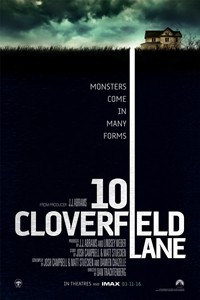 10 Cloverfield Lane
10 Cloverfield Lane
 ‘Zootopia’ instinctively balances a detective story with joyous animation
‘Zootopia’ instinctively balances a detective story with joyous animation
 Monte Yazzie’s Oscar Predictions
Monte Yazzie’s Oscar Predictions
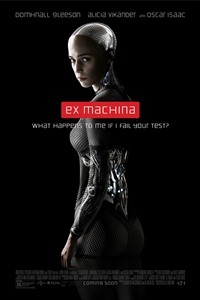 Best Supporting Actress:
Best Supporting Actress: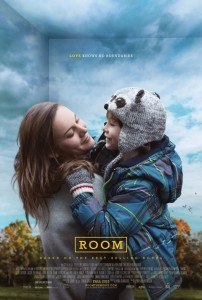
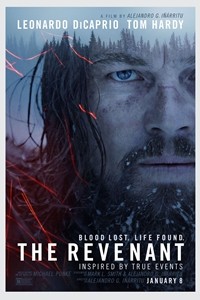 Who should have been nominated: Will Smith (“Concussion”) and Johnny Depp (“Black Mass”)
Who should have been nominated: Will Smith (“Concussion”) and Johnny Depp (“Black Mass”)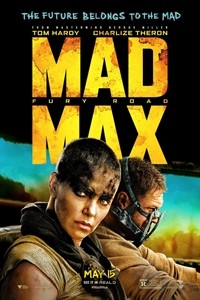
 Eddie the Eagle
Eddie the Eagle
 “Gods of Egypt” does not answer our movie prayers
“Gods of Egypt” does not answer our movie prayers
 Best Supporting Actress:
Best Supporting Actress: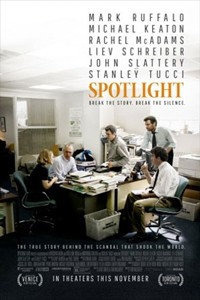 Best Picture:
Best Picture:  The Witch
The Witch








